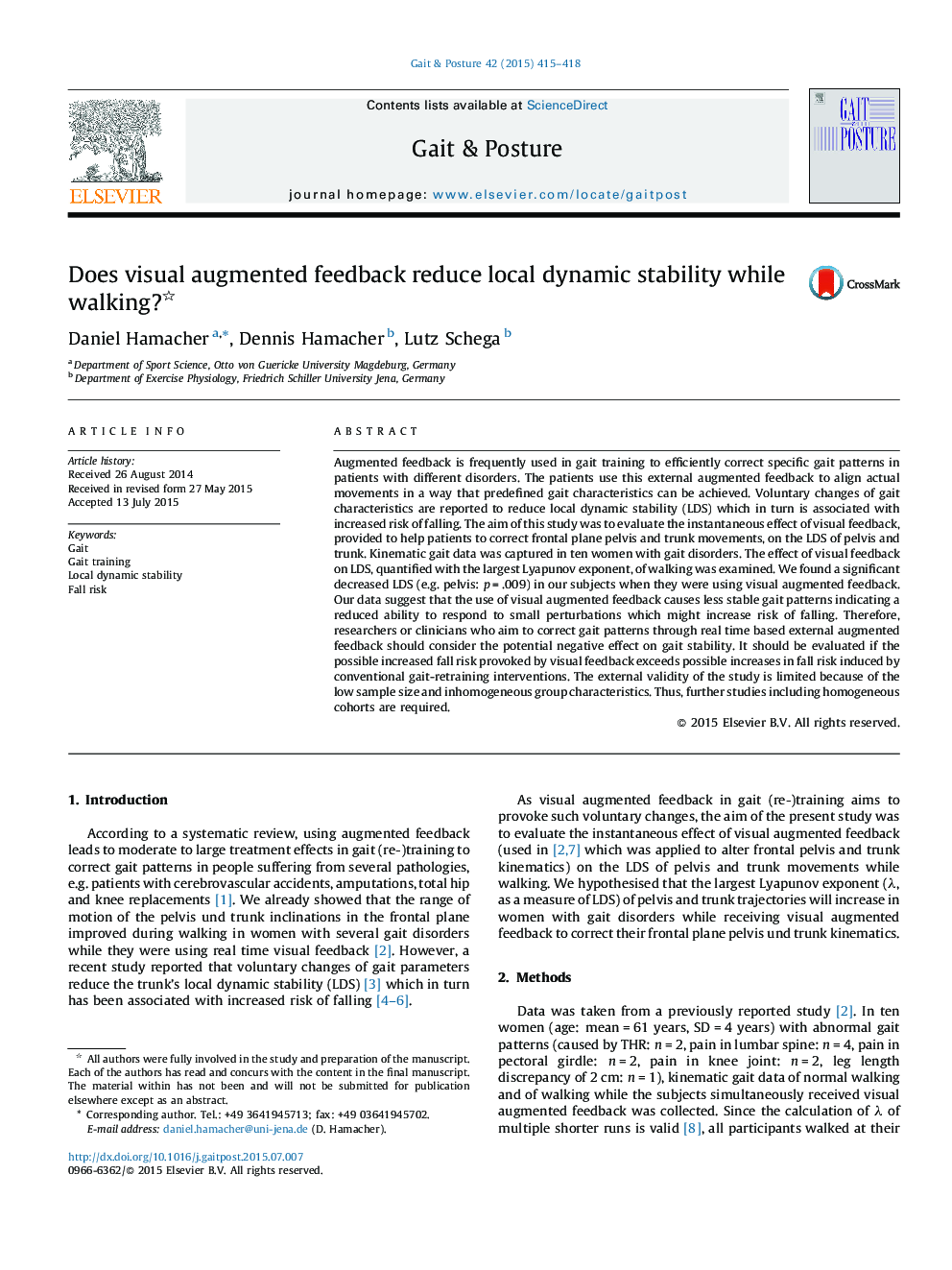| Article ID | Journal | Published Year | Pages | File Type |
|---|---|---|---|---|
| 4055729 | Gait & Posture | 2015 | 4 Pages |
•The effect of augmented feedback in gait training on local dynamic stability (LDS) was quantified.•Kinematic gait data was captured in nine women with different gait disorders.•We found a significant decreased LDS when the subjects were using visual augmented feedback.•Clinicians should consider the negative effect of augmented feedback on gait stability.
Augmented feedback is frequently used in gait training to efficiently correct specific gait patterns in patients with different disorders. The patients use this external augmented feedback to align actual movements in a way that predefined gait characteristics can be achieved. Voluntary changes of gait characteristics are reported to reduce local dynamic stability (LDS) which in turn is associated with increased risk of falling. The aim of this study was to evaluate the instantaneous effect of visual feedback, provided to help patients to correct frontal plane pelvis and trunk movements, on the LDS of pelvis and trunk. Kinematic gait data was captured in ten women with gait disorders. The effect of visual feedback on LDS, quantified with the largest Lyapunov exponent, of walking was examined. We found a significant decreased LDS (e.g. pelvis: p = .009) in our subjects when they were using visual augmented feedback. Our data suggest that the use of visual augmented feedback causes less stable gait patterns indicating a reduced ability to respond to small perturbations which might increase risk of falling. Therefore, researchers or clinicians who aim to correct gait patterns through real time based external augmented feedback should consider the potential negative effect on gait stability. It should be evaluated if the possible increased fall risk provoked by visual feedback exceeds possible increases in fall risk induced by conventional gait-retraining interventions. The external validity of the study is limited because of the low sample size and inhomogeneous group characteristics. Thus, further studies including homogeneous cohorts are required.
